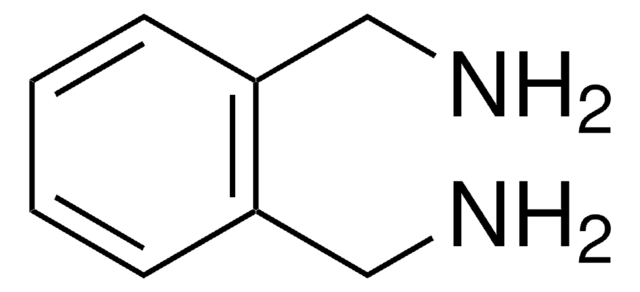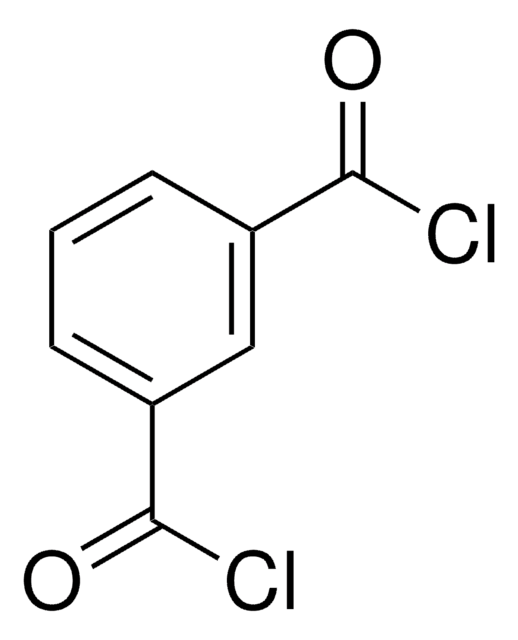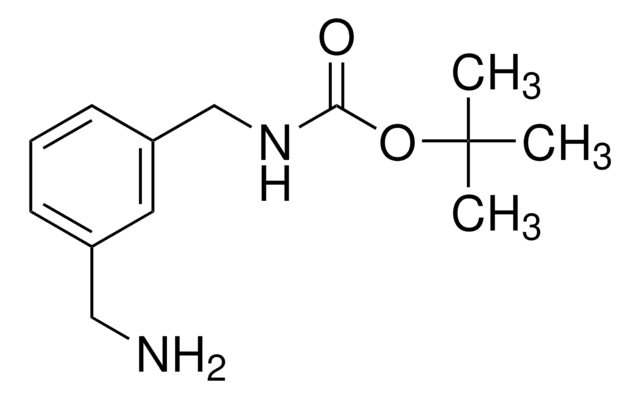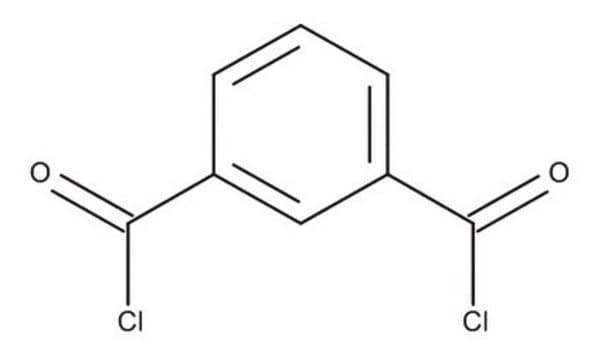279633
p-Xylylenediamine
99%
Synonym(s):
1,4-Bis(aminomethyl)benzene, α,α′-Diamino-p-xylene
About This Item
Recommended Products
Assay
99%
form
solid
bp
230 °C/10 mmHg (lit.)
mp
60-63 °C (lit.)
SMILES string
NCc1ccc(CN)cc1
InChI
1S/C8H12N2/c9-5-7-1-2-8(6-10)4-3-7/h1-4H,5-6,9-10H2
InChI key
ISKQADXMHQSTHK-UHFFFAOYSA-N
Looking for similar products? Visit Product Comparison Guide
General description
Application
- As a monomer to synthesize ultra heat-resistant thermoplastic polyamide elastomers suitable for high-temperature applications. It contributes to increased tensile strength, toughness, and Young′s modulus of the elastomer, thereby enhancing its overall mechanical strength.
- As a cross-linking agent to prepare solvent resistant high performance nanofiltration membranes. p-Xylylenediamine facilitates superior separation performance and stability for N,N-dimethylformamide (DMF) solution.
- As a dendrimer core to synthesize stimuli responsive nanocarriers for cancer drug delivery.
- As a capping agent to prepare fluorescent organic–inorganic hybrid CH3NH3PbBr3 nanocrystals to fabricate 3D-printed paper-based microfluidic optical sensor for naked-eye detection of picric acid.
Signal Word
Danger
Hazard Statements
Precautionary Statements
Hazard Classifications
Skin Corr. 1B
Storage Class Code
8A - Combustible corrosive hazardous materials
WGK
WGK 3
Flash Point(F)
Not applicable
Flash Point(C)
Not applicable
Personal Protective Equipment
Choose from one of the most recent versions:
Certificates of Analysis (COA)
Don't see the Right Version?
If you require a particular version, you can look up a specific certificate by the Lot or Batch number.
Already Own This Product?
Find documentation for the products that you have recently purchased in the Document Library.
Customers Also Viewed
Our team of scientists has experience in all areas of research including Life Science, Material Science, Chemical Synthesis, Chromatography, Analytical and many others.
Contact Technical Service













